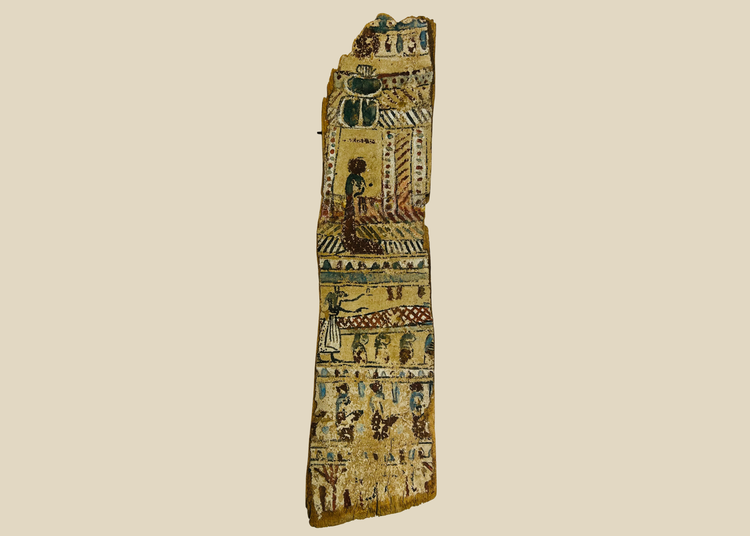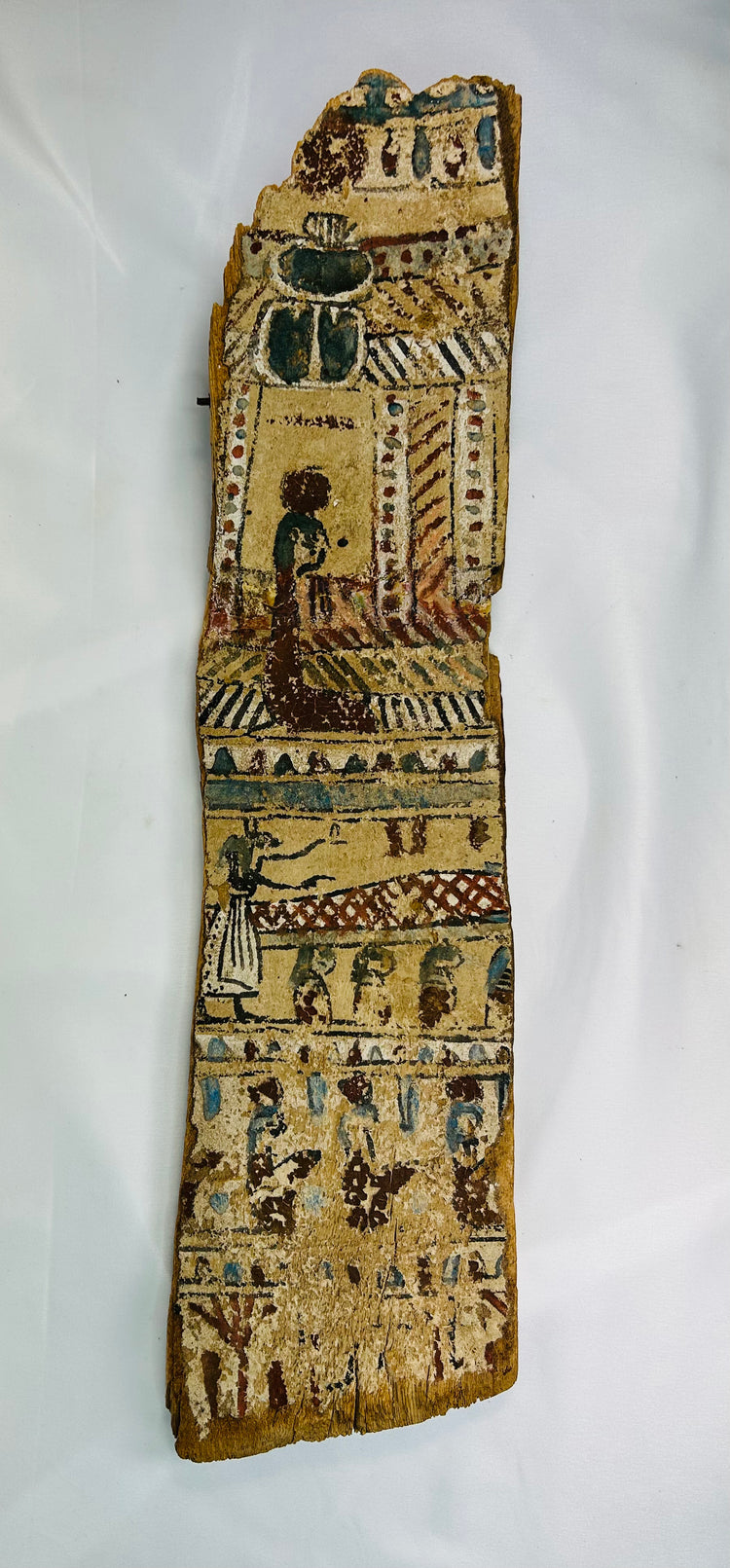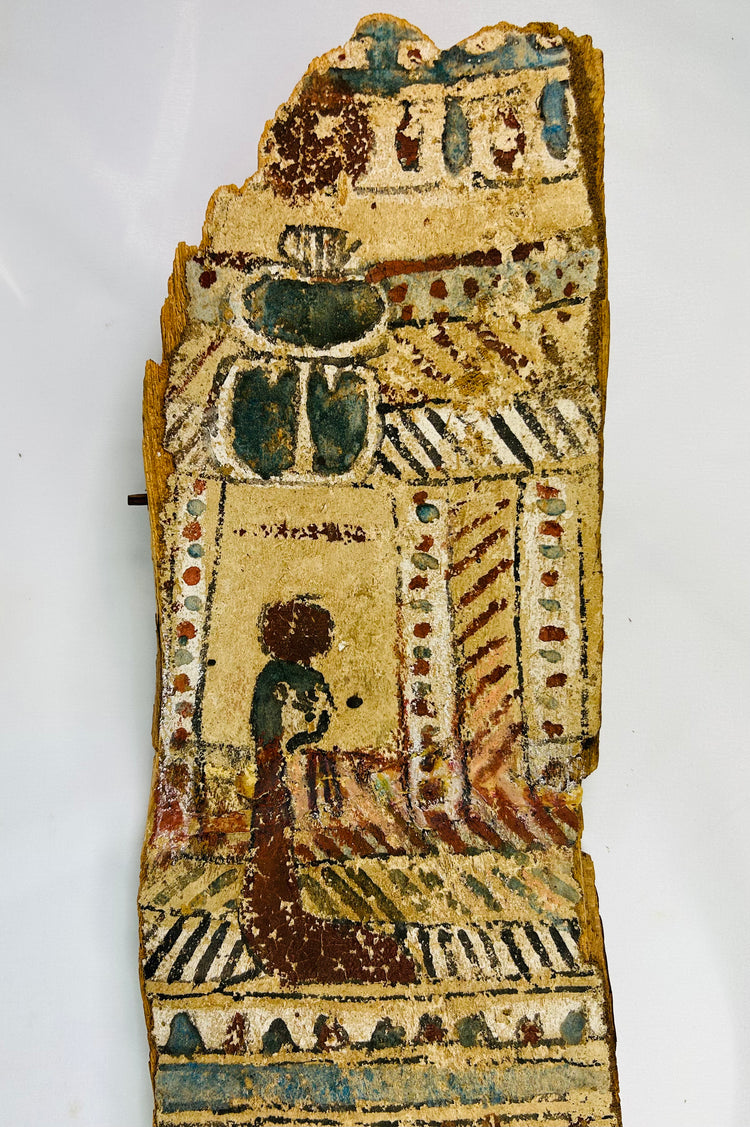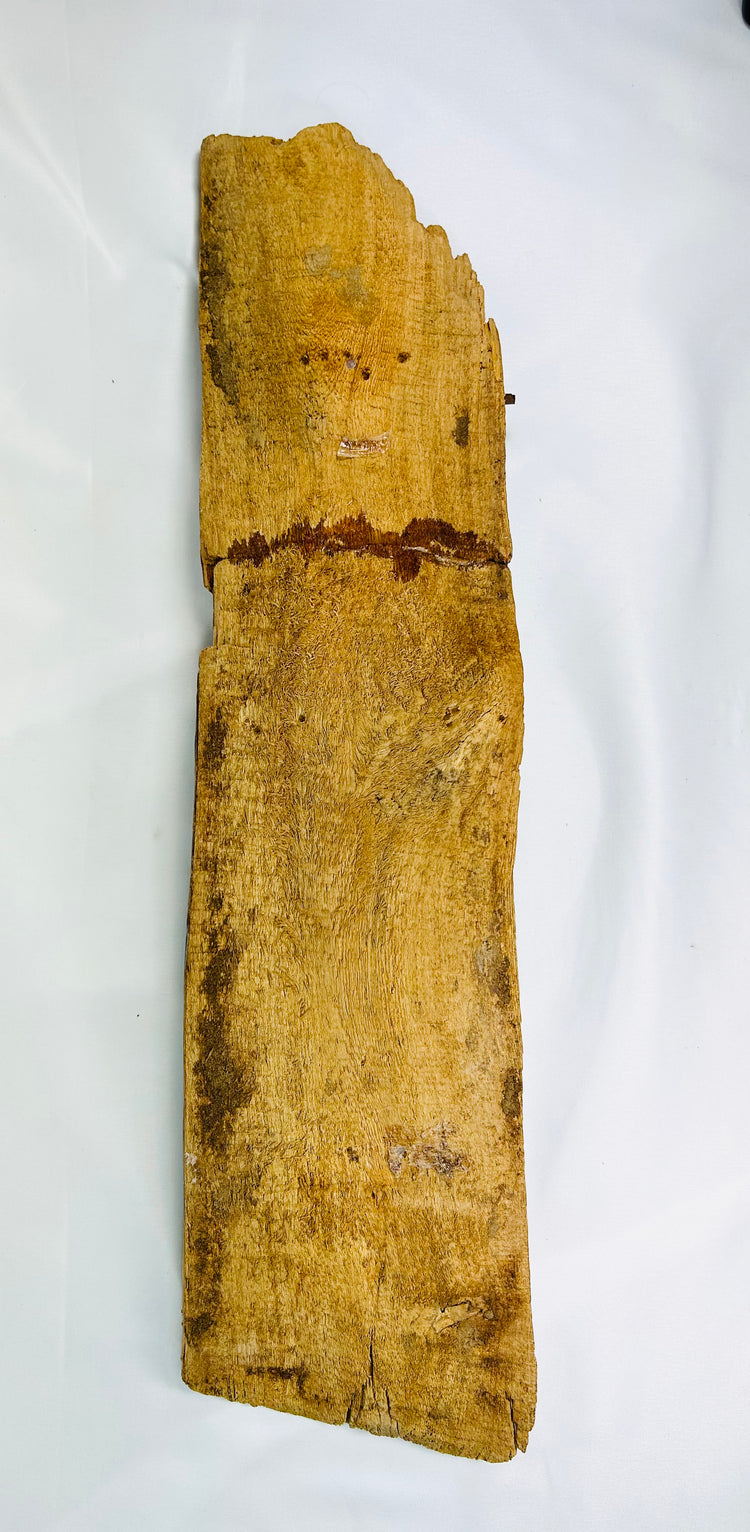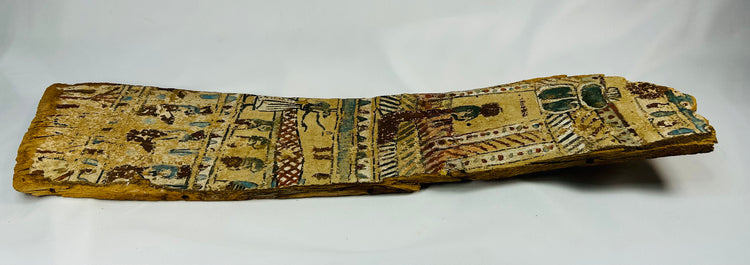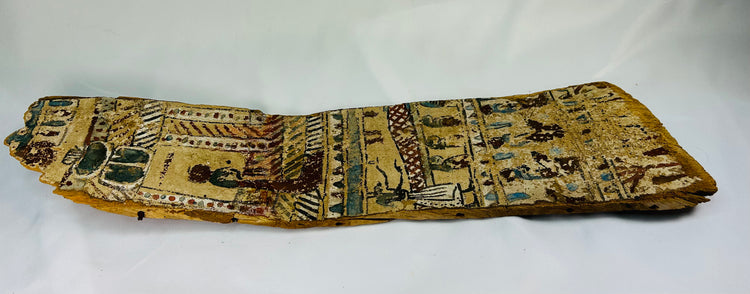Ancient Egyptian Polychrome Wooden Coffin Fragment | with Scarab and Funerary Scene | Circa 664–30 BCE
Description
Plus
Moins
Historical Context & Origin
Region: Egypt
Material: Painted wood with mineral pigments on gesso
Period: Late Period to Ptolemaic Period, circa 664–30 BCE
Description
This authentic ancient Egyptian painted coffin panel fragment dates from the Late Period to the Ptolemaic Period (circa 664–30 BCE) — over 2,000 years old. Finely rendered in vibrant red, blue, green, black, and white mineral pigments, it depicts multiple horizontal registers of ritual and funerary imagery.
The upper register features a brilliant blue-green scarab, symbolizing rebirth and the solar cycle, surrounded by decorative bands and lotus motifs. Below, a kneeling figure performs an offering ritual before a shrine — an invocation for safe passage into the afterlife. The reverse reveals aged, untreated wood with visible tool marks, emphasizing its authentic ancient origin.
Now professionally conserved and displayed within a custom glazed case, this piece offers a rare and evocative window into Egyptian funerary artistry and belief.
Features
- Painted in traditional Egyptian mineral pigments across multiple registers
- Prominent scarab motif symbolizing resurrection and eternal life
- Depicts offering and ritual scenes invoking divine protection
- Carved and painted on a gessoed wood base with natural age patina
- Professionally conserved and stabilized for long-term preservation
- Certificate of Authenticity included with scholarly comparison to examples in The Met and British Museum
- Presented in a 20th-century protective glazed case with linen backing
Cultural Significance
Fragments such as this formed part of elaborately decorated coffins meant to guide and protect the soul in its journey beyond. The scenes represented prayers, offerings, and sacred rites ensuring resurrection and divine favor. The scarab beetle, sacred to the sun god Khepri, embodied rebirth — a central theme in Egypt’s spiritual and funerary culture.
Condition
Fragmentary but stable with areas of pigment loss and surface flaking consistent with age. Professionally conserved and mounted for secure display.
Dimensions (Approximate)
Fragment
Height: 22 in
Width: 5.75 in
Display Case
Height: 25 in
Width: 19.25 in
Depth: 2.75 in
Age
Circa 664–30 BCE (Over 2,000 years old)
Learn More & Explore
Explore a wide range of ancient Egyptian coffin panel fragments and related funerary artifacts in The British Museum’s online collection.
Description
Historical Context & Origin
Region: Egypt
Material: Painted wood with mineral pigments on gesso
Period: Late Period to Ptolemaic Period, circa 664–30 BCE
Description
This authentic ancient Egyptian painted coffin panel fragment dates from the Late Period to the Ptolemaic Period (circa 664–30 BCE) — over 2,000 years old. Finely rendered in vibrant red, blue, green, black, and white mineral pigments, it depicts multiple horizontal registers of ritual and funerary imagery.
The upper register features a brilliant blue-green scarab, symbolizing rebirth and the solar cycle, surrounded by decorative bands and lotus motifs. Below, a kneeling figure performs an offering ritual before a shrine — an invocation for safe passage into the afterlife. The reverse reveals aged, untreated wood with visible tool marks, emphasizing its authentic ancient origin.
Now professionally conserved and displayed within a custom glazed case, this piece offers a rare and evocative window into Egyptian funerary artistry and belief.
Features
- Painted in traditional Egyptian mineral pigments across multiple registers
- Prominent scarab motif symbolizing resurrection and eternal life
- Depicts offering and ritual scenes invoking divine protection
- Carved and painted on a gessoed wood base with natural age patina
- Professionally conserved and stabilized for long-term preservation
- Certificate of Authenticity included with scholarly comparison to examples in The Met and British Museum
- Presented in a 20th-century protective glazed case with linen backing
Cultural Significance
Fragments such as this formed part of elaborately decorated coffins meant to guide and protect the soul in its journey beyond. The scenes represented prayers, offerings, and sacred rites ensuring resurrection and divine favor. The scarab beetle, sacred to the sun god Khepri, embodied rebirth — a central theme in Egypt’s spiritual and funerary culture.
Condition
Fragmentary but stable with areas of pigment loss and surface flaking consistent with age. Professionally conserved and mounted for secure display.
Dimensions (Approximate)
Fragment
Height: 22 in
Width: 5.75 in
Display Case
Height: 25 in
Width: 19.25 in
Depth: 2.75 in
Age
Circa 664–30 BCE (Over 2,000 years old)
Learn More & Explore
Explore a wide range of ancient Egyptian coffin panel fragments and related funerary artifacts in The British Museum’s online collection.
Vous aimerez peut-être aussi
























